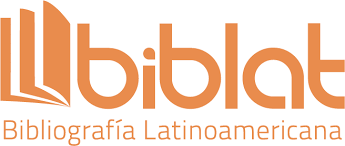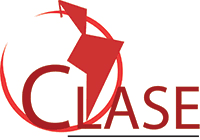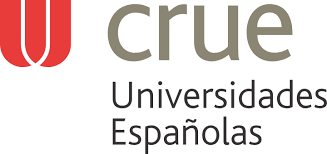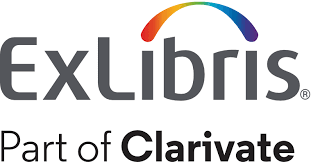Actualización sobre el síndrome de estrés tibial medial
DOI:
https://doi.org/10.22335/rlct.v6i3.22Palabras clave:
Síndrome de estrés tibial medial, lesión por estrés tibial, dolor en extremidades inferiores, actualización, deporte, rehabilitación, fisioterapia.Resumen
El síndrome de estrés tibial medial, es una de las causas más comunes de dolor inducido por el ejercicio en las extremidades inferiores entre los practicantes de actividad física y deporte, es un evento semiológico producido por lesiones repetitivas de estrés mecánico en la región medial de la tibia, frecuente entre las patologías que afectan a los corredores y militares en formación; generalmente no suele ser grave, pero si no se trata adecuadamente puede evolucionar a lesiones incapacitantes como la llamada fractura por estrés de la tibia. Existen factores de riesgo que contribuyen al desarrollo de la patología entre los que cabe mencionar el tipo de actividad, las inadecuadas técnicas de entrenamiento, las condiciones del terreno y el tipo de calzado utilizado, también la pronación anormal de la articulación subastragalina, el sexo femenino, un índice de masa corporal elevado, así como la disminución de la densidad mineral ósea. El diagnóstico generalmente se establece a través del interrogatorio y el examen físico ya que las radiografías no aportan datos de interés, solamente sirven para establecer el diagnóstico diferencial con las fracturas por estrés de la tibia y exámenes de imágenes más costosos no se justifican. El tiempo de recuperación de los afectados por esta patología es bastante prolongado, existiendo la tendencia al abandono, impidiendo así conseguir los objetivos terapéuticos propuestos, el tratamiento gold estándar es la terapia física, sin embargo, existen otras modalidades terapéuticas con grandes perspectivas para el tratamiento de esta entidad patológica entre las que sobresale la terapia por ondas de choque extracorpórea, y aunque existen estudios científicos a respecto, no son suficientes, tanto la fisiopatología, como la prevención y el tratamiento aún no están claros. Debido a lo anteriormente expuesto se realiza una revisión del estado del arte de los aspectos fundamentales de la patología.
Descargas
Referencias
Willems TM, Witvrouw E, De Cock A, De Clercq D. Gait-related risk factors for exercise-related lower-leg pain during shod running. Med Sci Sports Exerc. 2007;39(2):330-9.
Korkola M, Amendola A. Exercise-induced leg pain: sifting through a broad differential. Phys Sportsmed. 2001;29(6):35-50.
Hreljac A. Impact and overuse injuries in runners. Med Sci Sports Exerc. 2004;36(5):845-9.
Pearson C, Adams RD, Denny-Brown D. Traumatic necrosis of pretibial muscles. New Engl J Med. 1948; 239(6): 213-7.
Mubarak SJ, Gould RN, Lee YF, Schmidt DA, Hargens AR. The medial tibial stress syndrome: a cause of shin splints. Am J Sports Med. 1982; 10 (4): 201-5.
Yates B, White S. The incidence and risk factors in the development of medial tibial stress syndrome among naval recruits. Am J Sports Med. 2004; 32 (3): 772-80.
Galbraith RM, Lavallee ME. Medial tibial stress syndrome: conservative treatment options. Curr Rev Musculoskelet Med. 2009;2(3):127-33.
Edwards PH, Wright ML, Hartman JF. A practical approach for the differential diagnosis of chronic leg pain in the athlete. Am J Sports Med. 2005; 33(8): 1241-9.
Andrish JT, Bergfeld JA, Walheim J. A prospective study on the management of shin splints. J Bone Joint Surg Am. 1974;56(8):1697-700.
Kortebein PM, Kaufman KR, Basford JR, Stuart MJ. Medial tibial stress syndrome. Med Sci Sports Exerc. 2000; 32 Suppl 3: S27-S33.
Gilchrist J, Jones BH, Sleet DA, Kimsey CD. Exercise-related injuries among women: strategies for prevention from civilian and military studies. MMWR Recomm Rep. 2000; 49(RR-2):15-33.
Heir, T. Musculoskeletal injuries in officer training: One year follow-up. Mil.Med. 1998;163: 229-33.
Brushoj C, Larsen K, Albrecht-Beste E, Nielsen MB, Love F, Holmich P. Prevention of overuse injuries by aconcurrent exercise program in subjects exposed to an increase in training load; a randomized controlled trial of 1020 army recruits. Am J Sports Med. 2008; 36 (4): 663-70.
Taunton JE, Ryan MB, Clement DB. A retrospective case control analysis of 2002 running injuries. Br J Sports Med. 2003; 36 (2): 95-101.
Clanton TO, Solcher BW. Chronic leg pain in the athlete. Clin Sports Med. 1994; 13 (4): 743-59.
Abramowitz A, Schepsis A, McArthur C. The medial tibial syndrome: the role of surgery. Orthop Rev. 1994;24: 875-81.
Holder L, Michael R. The specific scintigraphic pattern of shin splints in the lower leg: concise communication.J Nucl Med. 1984;25: 865-9.
Puranen J. The medial tibial syndrome: exercise ischaemia in the medial fascial compartment of the leg. J Bone Joint Surg Br. 1974;56-B(4):712-5.
Schon L, Baxter D, Clanton T. Chronic exercise induced leg pain in active people. Physician Sports Med. 1992;20: 100-14.
Detmer DE. Chronic shin splints. Classification and management of medial tibial stress syndrome. Sports Med. 1986;3(6): 436-46.
Johnell O, Wendeberg M, Westlin N. Morphological bone changes in shin splints. Clin Orthop. 1982;167:180-4.
Batt ME, Ugalde V, Anderson MW, Shelton DK. A prospective controlled study of diagnostic imaging for acute shin splints.Med Sci Sports Exerc. 1998;30: 1564-71.
Anderson MW, Ugalde V, Batt M, Gacayan J. Shin splints: MR appearance in a preliminary study. Radiology 1997;204: 177-80.
Fredericson M, Bergman G, Hoffman K, Dillingham MS. Tibial stress reactions in runners: correlation of clinical symptoms and scintigraphy with a new magnetic resonance imaging grading system. Am J Sports Med. 1995;23: 472-81.
Anderson MW, Greenspan A. Stress fractures. Radiology. 1996; 199:1-12.
Beck B, Osternig L. Medial tibial stress syndrome: the location of muscles in the leg and relation to symptoms. J Bone Joint Surg Am. 1994;76: 1057-61.
Gaeta M, Minutoli F, Vinci S, Salamone I, D'Andrea L, Bitto L, et al. High resolution CT grading of tibial stress reactions in distance runners. AJR 2006; 187(3): 789-93.
Gaeta M, Minutoli F, Scribano E, Ascenti G, Vinci S, Bruschetta D, et al. CT and MRI imaging findings in athletes with early tibial stress injuries: comparison of bone scintigraphy findings and emphasis on cortical abnormalities. Radiology 2005; 235(2): 553-61.
Aoki Y, Yasuda K, Tohyama H, Ito H, Minami A. Magnetic resonance imaging in stress fractures and shin splints. Clin Orthop Relat Res. 2004;(421):260-7.
Magnusson HI, Westlin NE, Nyqvist F, Gärdsell P, Seeman E, Karlsson MK. Abnormally decreased regional bone density in athletes with medial tibial stress syndrome. Am J Sports Med 2001; 29(6): 712-5.
Magnusson HI, Ahlborg HG, Karlsson C, Nyquist F, Karlsson MK. Low regional tibial bone density in athletes normalizes after recovery from symptoms. Am J Sports Med 2003; 31(4): 596-600.
Wilder R, Seth S. Overuse injuries: tendinopathies, stress fractures, compartment syndrome, and shin splints. Clin Sports Med. 2004; 23: 55-81.
Strakowski J, Jamil T. Management of common running injuries. Phys Med Rehabil Clin N Am. 2006;17(3): 537-52.
Bennett JE, Reinking MF, Pluemer B, Pentel A, Seaton M, Killian C. Factors contributing to the development of medial tibial stress syndrome in high school runners. J Orthop Sports Phys Ther. 2001;31(9): 504-10.
Delacerda FG. A study of anatomical factors involved in shin splints. J Orthop Sports Phys Ther 1980 Fall; 2(2): 55-9.
Plisky MS, Rauh MJ, Heiderscheit B, Underwood FB, Tank RT. Medial tibial stress syndrome in high school cross-country runners: incidence and risk factors. J Orthop Sports Phys Ther 2007; 37(2): 40-7.
Moen MH, Bongers T, Bakker EW, Zimmermann WO, Weir A, Tol JL, et al. Risk factors and prognostic indicators for medial tibial stress syndrome. Scand J Med Sci Sports. 2012;22(1): 34-9.
Burne SG, Khan KM, Boudville PB, Mallet RJ, Newman PM, Steinman LJ et al. Risk factors associated with exertional tibial pain: a twelve months prospective clinical study. Br J Sports Med 2004; 38(4): 441-5.
Bartosik KE, Sitler M, Hillstrom HJ, Palamarchuk H, Huxel K, Kim E. Anatomical and biomechanical assessments of medial tibial stress syndrome. J Am Podiatr Med Assoc. 2010; 100(2): 121-32.
Thacker SB, Gilchrist J, Stroup D.F, Kimsey CD. The prevention of shin splints in sports: a systematic review of literature. Med Sci Sports Exerc. 2002; 34(1): 32–40.
Beck B. Tibial stress injuries: an aetiological review for the purposes of guiding management. Sports Med. 1998; 26(4): 265–79.
Couture C, Karlson K. Tibial stress injuries: decisive diagnosis and treatment of shin splints. Phys Sportsmed. 2002;30(6):29–36.
DeLee J. DeLee & Drez’s orthopaedic sports medicine: principles and practice. Philadelphia. Saunders; 2003. p. 2155–9.
Taube R, Wadsworth L. Managing tibial stress fractures. Phys Sportsmed. 1993;21:123–30.
Dugan S, Weber K. Stress fracture and rehabilitation. Phys Med Rehabil Clin N Am. 2007;18(3):401–16.
Fredericson M. Common injuries in runners. Diagnosis, rehabilitation and prevention. Sports Med. 1996;21:49–72.
Herring K. A plyometric training model used to augment rehabilitation from tibial fasciitis. Curr Sports Med Rep. 2006;5(3):147–54.
Niemuth P, Johnson R, Myers M, Thieman T. Hip muscle weakness and overuse injuries in recreational runners. Clin J Sport Med. 2005;15(1):14–21.
Ireland, M. L.; Willson, J. D.; Ballantyne, B. T.; Davis, I. S., Hip Strength in Females With and Without Patellofemoral Pain. J Orthop Sports PhyS Ther. 2003, (33), 671-6.
Plastaras C, Rittenberg J, Rittenberg K, Press J, Akuthota V. Comprehensive functional evaluation of the injured runner. Phys Med Rehabil Clin N Am. 2005;16(3):623-49.
Hootman J, Macera C, Ainsworth B, Martin M, Addy C, Blair S. Predictors of lower extremity injury among recreationally active adults. Clin J Sport Med. 2002;12: 99-106.
Sommer H, Vallentyne S. Effect of foot posture on the incidence of medial tibial stress syndrome. Med Sci Sports Exerc. 1995;27:800-5.
Morris RH. Medial tibial syndrome: a treatment protocol using electric current. Chiropractic Sports Med. 1991; 5(1): 5-8.
Nissen LR, Astvad K, Madsen L. Low-energy laser therapy in medial tibial stress syndrome.1994; 156(49):7329-31.
Callison M. Acupuncture & tibial stress syndrome (shin splints).Journal of Chinese Medicine. 2002;70: 54-7.
Schulman RA. Tibial shin splints treated with a single acupuncture session: case report and review of the literature. J Am Med Acupuncture. 2002; 13(1):7-9.
Johnston E, Flynn T, Bean M, Breton M, Scherer M, Dreitzler G, et al. A randomised controlled trial of a leg orthosis versus traditional treatment for soldiers with shin splints: a pilot study. Mil Med 2006; 171(1): 40-4.
Moen MH, Bongers T, Bakker EW, Weir A, Zimmermann WO, M, Backx FJ. The additional value of a pneumatic leg brace in the treatment of recruits with medial tibial stress syndrome; a randomized study. Med Corps.2010;156 (4):236-40.
Loudon JK, Dolphino MR. Use of foot orthoses and calf stretching for individuals with medial tibial stress syndrome. Foot Ankle Spec. 2010; 15-20.
Padhiar N, Jones PR, Curtin M, Malliaras P, Chan O, Crisp TA. The effectiveness of prolotherapy for recalcitrant medial tibial stress syndrome: a prospective case series. Br J Sports Med 2011;45:A16 (consultado 0307/2015). doi:10.1136/bjsports-2011 090606.51.
Moen MH, Holtslag L, Bakker E, Barten C, Weir A, ToL JL, et al. The treatment of medial tibial stress syndrome in athletes; a randomized clinical trial. Sports Med Arthrosc Rehabil Ther Technol. 2012 Mar 30;4:12. (consultado 0307/2015). doi: 10.1186/1758-2555-4-12.
Alí T, Mohammed F, Mencia M, Maharaj D, Hoford R. Surgical Management of Exertional Anterior Compartment Syndrome of the Leg. West Indian Med J. 2013; 62 (6): 529-32.
Medina I, Jurado A, Magee DJ, Vas J. Local multipunctual corticosteroid injections for medial tibial stress syndrome: a novel approach. Rev.Ib.CC. Act. Fis. Dep. 2013; 2 (3):22-7.
Griebert MC, Needle AR, McConnell J, Kaminski TW. Lower leg Kinesio tape reduces of loading in participants with medial tibial stress syndrome. Phys Ther Sport. 2014 Jan 29. (consultado 0307/2015).pii: S1466-853X(14)00002-9. doi: 10.1016/j.ptsp.2014.01.001.
Schulze C, Finze S, Bader R, Lison A. Treatment of medial tibial stress syndrome according to the fascial distortion model : a prospective case control study. Scientific World Journal. 2014. (consultado 0307/2015). doi: 10.1155/2014/790626.
Holen KJ, Engebretsen L, Grondvedt T, Rossvoll I, Hammer S, Stolz V. Surgical treatment of medial tibial stress syndrome (shin splints) by fasciotomy of the superficial posterior compartment of the leg. Scan J Med Sci Sports 1995; 5(1): 40-3.
Järvinnen M, Niittymäki S. Results of the surgical treatment of the medial tibial stress syndrome in athletes. Int J Sports Med 1989; 10(1): 55-7.
Wallenstein R. Results of fasciotomy in patients with medial tibial stress syndrome or chronic anterior compartment syndrome. J Bone Joint Surg Am 1983; 65(9): 1252-5.
Yates B, Allen MJ, Barnes MR. Outcome of surgical treatment of medial tibial stress syndrome. J Bone Joint Surg Am 2003; 85(10):1974-80.
Dreisilker U. Terapia por ondas de choque en la práctica. Entensopatias. Heilbronn. Level10 Buchverlag Daniela Bamberg; 2010. p.50-3.
Furia JP. High-energy extracorporeal shock wave therapy as a treatment for chronic insertional Achilles tendinopathy. Am J Sports Med.2006;34:733-40.
Rompe JD, Meurer A, Nafe B, Hofmann A, Gerdesmeyer L. Repetitive low-energy shock wave application without local anesthesia is more efficient than repetitive low-energy shock wave application with local anesthesia in the treatment of chronic plantar fasciitis. J Orthop Res. 2005;23: 931-41.
Dias MP, Newton DJ, McLeod GA, Khan F, Belch JJ. The inhibitory effects of local anaesthetics on the vascular flare responses to bradykinin and substance P in human skin. Anaesthesia. 2008; 63: 151-5.
Lohrer H, Nauck T, Dorn-Lange NV, Schöll J, Vester JC. Comparison of radial versus focused extracorporeal shock waves in plantar fasciitis using functional measures. Foot Ankle Int. 2010;31(1):1-9. (consultado 0307/2015). doi: 10.3113/FAI.2010.0001.
Ozkut AT, Kilinçoğlu V, Ozkan NK, Eren A, Ertaş M. Extracorporeal shock wave therapy in patients with lateral epicondylitis. Acta Orthop Traumatol Turc. 2007;41(3):207-10.
Taki M, Iwata O, Shiono M, Kimura M, Takagishi K. Extracorporeal shock wave therapy for resistant stress fracture in athletes: a report of 5 cases. Am J Sports Med. 2007;35(7):1188-92.
Rompe JD, Segal NA, Cacchio A, Furia JP, Morral A, Maffulli N. Home training, local corticosteroid injection, or radial shock wave therapy for greater trochanter pain syndrome.Am J Sports Med.2009;37(10):1981-90.
Vulpiani MC, Vetrano M, Savoia V, E, Trischitta D, Ferretti A. Jumper's knee treatment with extracorporeal shock wave therapy: a long-term follow-up observational study. J Sports Med Fitness. 2007;47(3):323-8.
Wilson M, J. Shock wave therapy for Achilles tendinopathy. Curr Musculoskelet Med. 2010;4(1):6-10.
Avancini-Dobrović V, Frlan-Vrgoc L, Stamenković D, Pavlović I, Vrbanić TS. Radial extracorporeal shock wave therapy in the treatment of shoulder calcific tendinitis. 2011;35 Suppl 2: 221-5.
Lohrer H, Schöll J, Arentz S. Results of radial shockwave treatment of sports-induced diseases (achillodynia, patella tip syndrome and tibialis anterior syndrome). En: Gerdesmeyer L, Weil LS. Extracorporeal Shockwave Therapy. Towson: Data Trace Publishing Company; 2007:161-76.
Rompe JD, Cacchio A, Furia JP, Maffulli N. Low energy extracorporeal shock wave therapy as a treatment for medial tibial stress syndrome.Am J Sports Med.2010;38(1):125-32.
Moen MH, Rayer S, Schipper M, Schmikli S, Weir A, Tol JL, et al. Shock wave treatment for medial tibial stress syndrome in athletes;a prospective controlled study. Br J Sports Med. 2012; 46(4):253-7.
Publicado
Número
Sección
Licencia
Esta revista provee acceso libre e inmediato a su contenido (https://creativecommons.org/licenses/by-nc-nd/4.0/), bajo el principio de hacer disponible gratuitamente la investigación al público y apoyar a un mayor intercambio de conocimiento global.
































